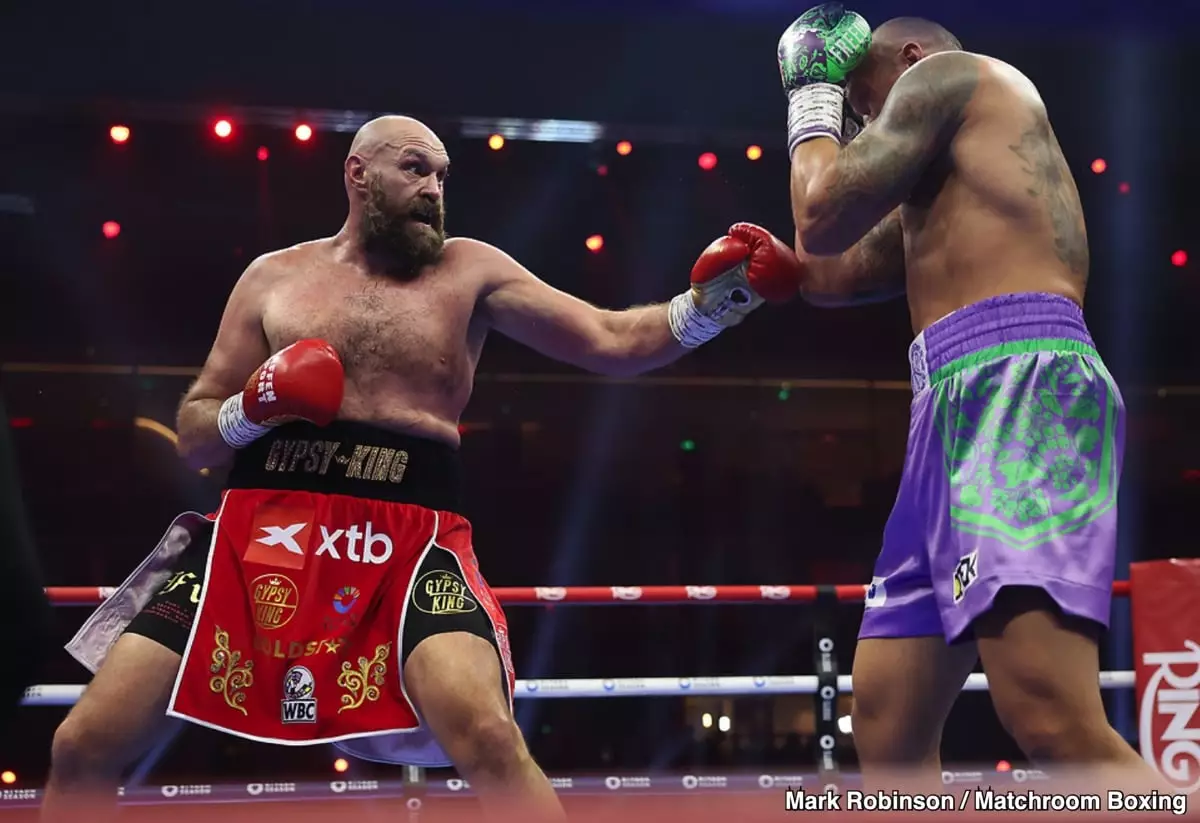The highly anticipated rematch between Tyson Fury and Oleksandr Usyk on Saturday showcased not just the skills of two elite heavyweights but also the complex interplay of opinion and bias that characterizes the boxing world. Promoter Eddie Hearn’s controversial assertion of scoring the bout as a draw raises questions about the subjectivity inherent in fight scoring and the implications of personal biases on public perceptions.
Usyk emerged victorious with a unanimous decision, the judges scoring the fight 116-112 in his favor. However, to many observers, the fight did not appear close at all. Fury’s performance was lackluster; he failed to establish a consistent offensive strategy and often resorted to missing crucial punches. His trademark right uppercut, which has historically been a fight-winner, was notably ineffective. Critics have likened Fury’s physical state to that of an athlete underprepared for a major event, a sentiment substantiated by his noticeably extra weight—a so-called “Elvis paunch”—that seemed to hinder his agility and stamina.
Hearn’s position that the fight could be scored a draw brings to light the nuances of subjective scoring in boxing. While Hearn claims that he found many rounds difficult to score—reflecting a chess-like battle—it’s essential to scrutinize whether this is a fair interpretation based on visible performance metrics or a biased viewpoint influenced by close relationships with Fury’s promotional team.
Fury’s physique at the match raised eyebrows, and the implications of his fitness level should not be ignored. During the build-up to the fight, Fury claimed a focus on training that involved cutting ties with family to enhance concentration. Ironically, his physical conditions appeared counterproductive to such a focused approach, leading one to wonder how effective his training truly was.
If Fury had entered training with a more stringent and disciplined approach, perhaps he would have avoided looking unfit. Anecdotal evidence suggests that elite athletes often require strict dietary regimes and intensive physical training regimens to maintain optimal fighting shape. Had Fury followed a more conventional route of weight management and physical preparation, the outcome may have differed significantly.
Commentators present at ringside offered diverse perspectives reflecting their backgrounds and biases. Sergio Mora articulated the frustrations echoed by many boxing aficionados—that Fury failed to fight to his strengths. Strategically, Fury was encouraged to utilize his size and weight advantage, specifically targeting Usyk’s midsection. Instead, he engaged in a game of erratic uppercuts that were often countered effectively, demonstrating Usyk’s superior defensive maneuvers.
It raises a critical question: how is it that prominent commentators, observers, and promoters in attendance could arrive at such divergent conclusions regarding the match outcome? This scenario exemplifies the importance of maintaining objectivity in boxing commentary, as biases can easily skew perceptions of performance. While Hearn cites the opinions shared by Fury’s associates, the communal echo chamber he described can easily transform constructive critique into mere cheerleading.
The rematch serves as a significant learning opportunity for both fighters. For Usyk, the undeniable clarity of victory reaffirms his status as one of the elite heavyweights. He demonstrated resilience and adaptability, particularly in the latter half of the fight—qualities that champions must possess. For Fury, it signals a wake-up call; top-tier athleticism is not merely a matter of talent but one that demands attention to fitness, strategy, and preparation.
Promoters like Hearn may attempt to position narratives around outcomes for their fighters, but the reality of performance speaks louder than opinions. As the boxing world reflects on this latest chapter in heavyweight history, the focus must remain on how athletes evolve from their experiences, continually working to hone their craft amid an ever-evolving sport.
In the sport of boxing, opinions are as varied as the fighters themselves. The debate surrounding the Fury vs. Usyk bout illustrates not just the complexity of scoring fights but also highlights the necessity for athletes to adapt continuously. Whether one agrees with Hearn’s interpretation or not, ultimately, the decision lies in the ring—the true measure of a fighter’s abilities is found in their performance when it matters most. As boxing enthusiasts, we should embrace a nuanced perspective that recognizes both the beauty and the flaws of this storied sport.


Leave a Reply